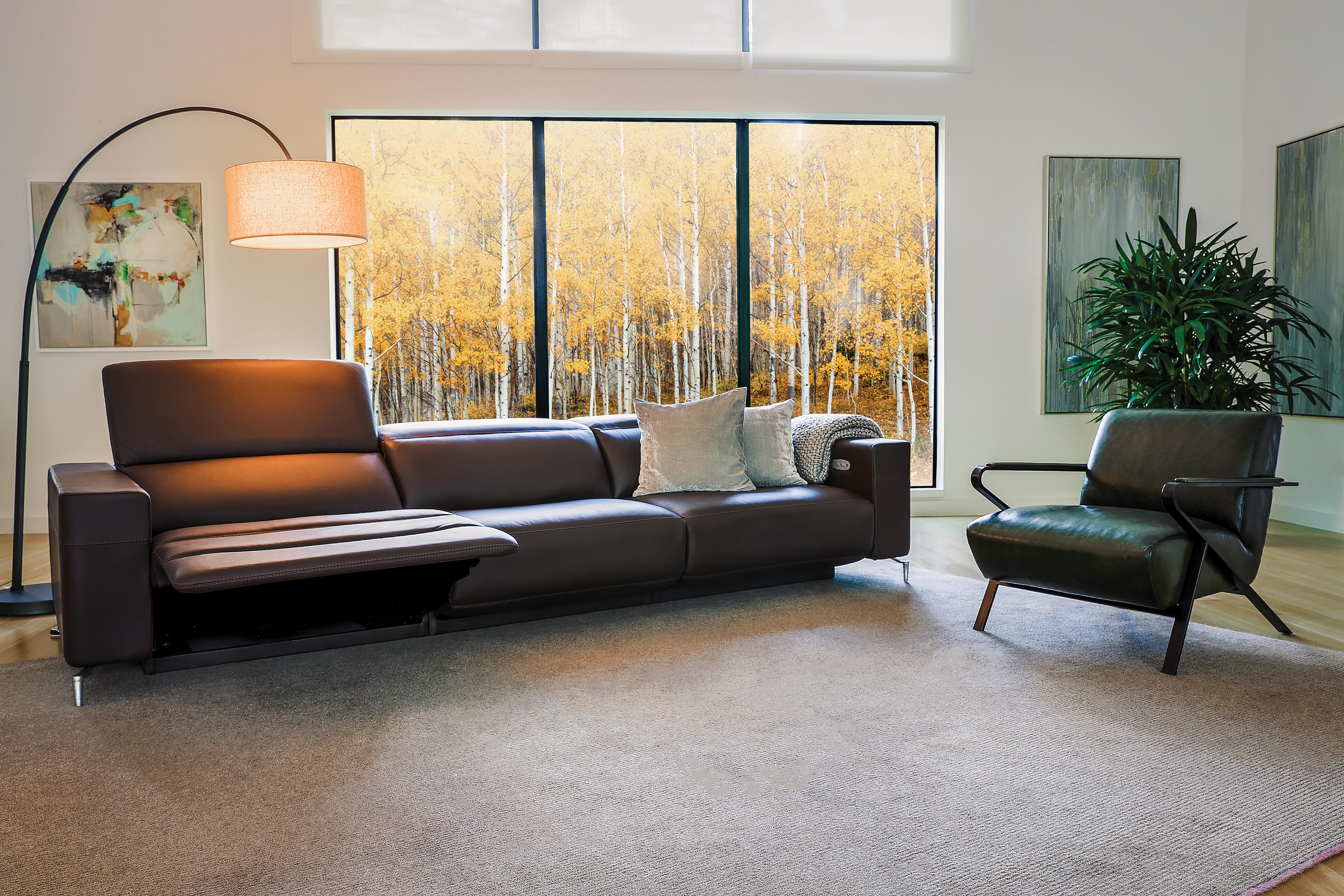Blog
How to Choose the Right Leather for Your Sofa
Leather is a popular choice for upholstery and with good reason. When taken care of, leather ages like a fine wine - it only gets better and softer with time. Once you've decided to go down the leather path, it's important to learn how to choose the right one.
Cindy Rubenfeld, our store manager in Middleton, helps us navigate the different leather types and gives you some tips on how to choose the right leather for you.

Why choose leather?
First, why choose leather in the first place?
"Well to start," Cindy explains, "Most leathers are going to last 7 times longer than any fabric. It's one of the strongest and most durable upholstery options."
Besides being extremely durable, leather is, for the most part, easier to maintain and clean than fabric. Leather also tends to be breathable, so you'll be comfortable regardless of the weather.
Finally, many choose a leather for the aesthetic appeal alone. Leather is associated with luxury and class and can lend a polished look to any room. And many appreciate the worn look that leather takes on over time - making it a worthy investment in your home.
Types of leather
The quality of the leather is determined, much like meat, by where on the animal the hide comes from. It also comes down to the type of animal and the skill and technique used to make the leather.

Top-grain leather
The highest-quality leathers are called "full-grain" and "top-grain." These are the most supple, soft, and buttery leathers. They're the best part of the hide, and because there's more leather to work with, repairs in the future are easier.
As Cindy says, "They're the cream-of-the-crop of leathers."
Split leather
Moving down from there, you have split leather which is still leather, but it doesn't come from the best section of the hide. It has a rougher texture and is sanded to remove imperfections.
Split leathers are extremely durable but the quality is not as high as a top-grain, and there's less surface area, making it more difficult to make repairs in the future.
Bonded leather
Finally, bonded leather is the lowest quality leather and is made up of scraps from the hide which are bonded together and then coated and spray painted to give the appearance of natural leather.
You can think of it as the particleboard of leather, the quality isn't there and it's impossible to make repairs down the line.

Color
When it comes to the color of leather, there are a few options. Most high-quality, top-grain leathers use a process called aniline, in which the dye goes all the way through the hide. Visually, this will hold up better over time and even with wear and tear it looks beautiful.
Aniline leather is leather in its most natural form. Semi-aniline leather is produced with a similar process but has a thin protective coat to prevent wear and tear.
Lower quality options will have a color coating just on the top of the leather, so if you get a scratch it's going to show up.
Levels of protection
When you're considering leather options, the protection on the level is an extremely important factor.
- The lightest protection is really for leather enthusiasts, it's going to have a soft, buttery feel and a natural, raw look. There is more maintenance required and it will absorb oils, so it's generally not recommended for families.
- Medium protection will have a coating to protect from spills, stains, and general wear and tear.
- Heavy protection will have the heaviest coating, and it generally is stamped for a unified look. It's the furthest away from its natural form.
How to choose the right leather
When it comes to choosing the right leather, it all comes down to lifestyle. Cindy says, "I'll talk to my clients about how they'll be using the piece of furniture. Do they have a family or animals? Where is it going in the house? Will it be getting used every day?
These questions will help you determine what leather is going to last the longest in your home. If comfort and feel are the most important qualities to you and it isn't a piece of furniture that you'll be eating on - for example, a chair in your bedroom - you might look towards a top-grain leather with light protection.
If, on the other hand, you have small children, you'll want to get leather with built-in protection to it. Whether that's a protective sealant or a wax coat for a more old-world look.
When it comes to cost, Cindy explains that "the higher the price, the more soft and supple your leather will be."
If you're concerned about the upkeep of your leather furniture, read more on care and maintenance so you can make the most of your leather furniture and treat it right.

Talk to a designer
Learning about the different types of leather is an important step in choosing the right one for you. But ultimately, there's no shortcut to coming into a showroom and feeling the leather for yourself. When you talk to a designer you trust, they'll take the intimidation factor out and make the process of choosing the right leather easy.
Watch now: How to Care for Your Leather Furniture
Author: Guest Author

